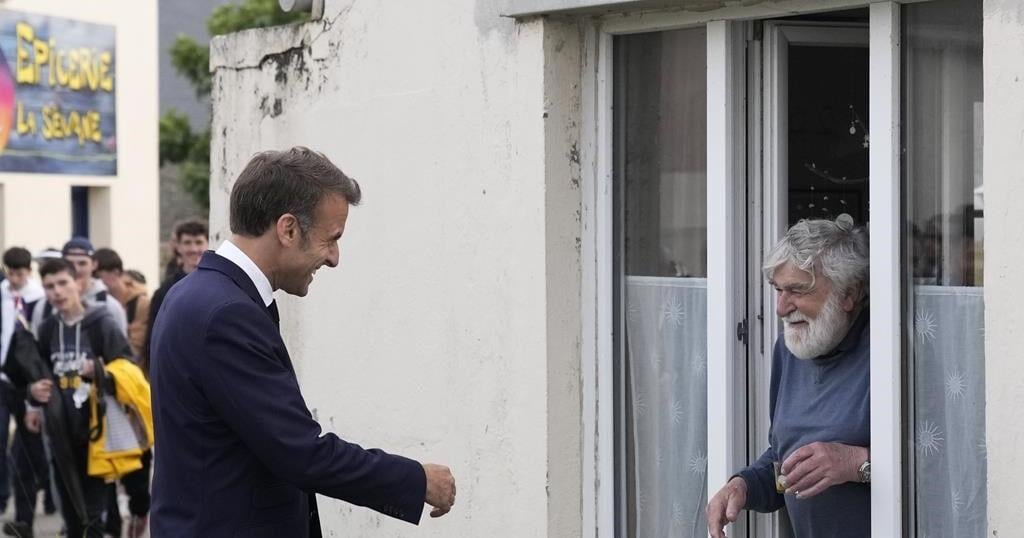MONTREAL – Large numbers of French nationals in Montreal are expected to turn out on Saturday for the first round of France’s parliamentary elections, spurred to the ballot box by the threat of a surging far-right party and its allies that are leading in the polls back home.
Quebec is home to 260,000 French citizens, 200,000 of whom live in Montreal. They form the largest population of French nationals outside mainland France, and more than one-quarter of registered voters in North America, according to the French government.
The French electoral system allows its citizens living abroad in 11 different districts to each elect a deputy to the National Assembly, which has 577 seats. French citizens in Montreal belong to the same district as French people living in the United States, Turks and Caicos, the Cayman Islands and Bermuda. On Saturday, they will choose between nine candidates, from French President Emmanuel Macron’s Renaissance Party to the National Rally, an anti-immigrant party poised to gain the most seats.
Marie Lapierre, France’s Consul general in Montreal, says she thinks the participation rate in the city this election will be double what it was in 2022.
“The last parliamentary election in 2022, we had a (turnout) of about 25 per cent of voters. This time we have prepared for more … we are prepared to welcome a (turnout) of about 50 per cent,” she said.
“There is a very high mobilization from the French community who was really ready to help us organize the vote,” Lapierre said.
Yan Niesing, president of the Union Française de Montréal, an organization that helps French nationals settle in the city, called the election “historic.”
“Everyone wants to have their say,” he said.
Frédéric Mérand, a political science professor at the Montreal Centre for International Studies at Université de Montréal, says the level of engagement in the city is unusual for a French election.
“You see placards and posters and people distributing leaflets on the streets of Montreal for an election that’s taking place in France, so it is significant in that sense,” he said.
The election is an exceptional moment in France’s political history. Macron called the snap election earlier this month following a crushing defeat of his party by the far right in the European parliamentary vote. The first round, on Saturday, could see the country’s first far-right government since the Second World War Nazi occupation — or no majority emerging at all.
The outcome of the vote, following the second round on July 7 and an exceptionally brief campaign, remains highly uncertain as three major political blocs are competing: the far-right National Rally, Macron’s centrist alliance and the New Popular Front coalition that includes centre-left, greens and hard-left forces.
Mérand says the main contenders for Montreal voters are centrist and left-wing parties.
“All the other candidates are expected to be way, way, way behind,” he said.
In 2022, a left-wing alliance won big among Montreal’s French voters, Macron’s party came in second with 25 per cent of the city’s French residents, and the National Rally came away with two per cent. However, with the votes of people in the United States and elsewhere in the district, Macron’s candidate took the seat.
Chedly Belkhodja, a professor at Concordia University’s School of Public and Community Affairs, puts the upswing in voter interest down to a historic contest in France’s polarized society.
“This election will show maybe a side of France that has not been seen for many, many years, which is the rise of the far-right,” he said, adding that parties that used to be on the political fringe have become more normalized and mainstream in recent years.
One of the candidates French-Montrealers can choose from is Olivier Piton, based in Washington D.C., who is with Les Républicains, the centre-right party that former president Nicolas Sarkozy belonged to. Piton says he is the best candidate to represent his constituents in North America, whose concerns differ from French citizens on the mainland.
“Now we need to focus on what is really important for us … how can we defend our rights as French nationals, as residents in Canada or in the U.S.,” he said.
Elias Forneris, candidate for Une Nouvelle Energie pour la France, also resides in the American capital, and has spent much of his life in the United States and the United Kingdom. With little time to prepare following Macron’s announcement to dissolve parliament, he has focused most of his campaigning online.
“I think there’s something that unites the French people living in Canada and the United States. It’s that often times, we’re forgotten by the state in France even though we’re citizens on the same level as them, so what I’d like to do is be able to represent the voices of French people here,” he said.
This report by The Canadian Press was first published June 29, 2024.
— With files from The Associated Press.
